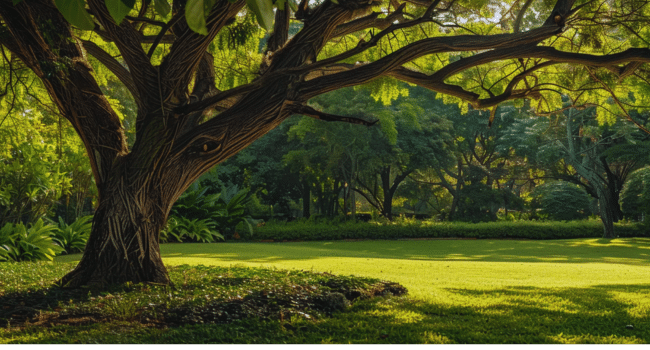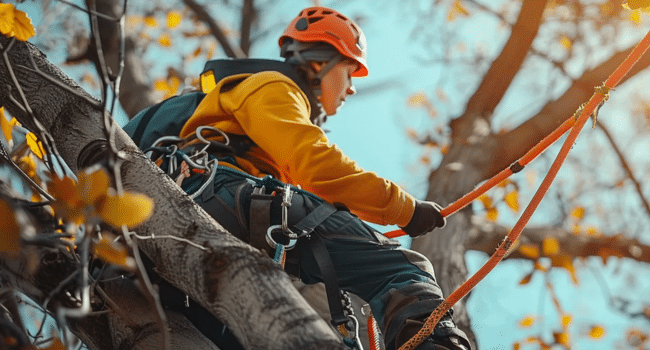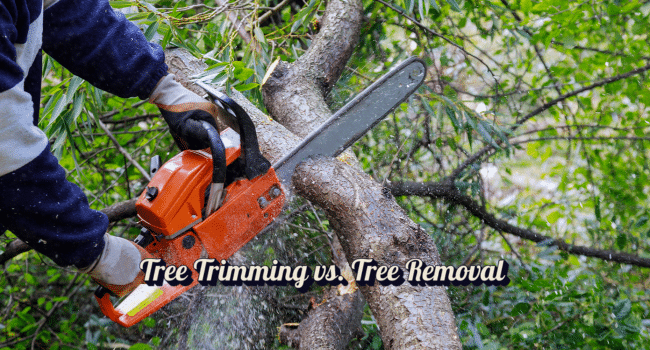Table of Contents
Trees play a vital role in enhancing the aesthetic appeal and environmental health of our surroundings. However, they often require maintenance to keep them healthy and safe. Understanding when to opt for tree trimming as opposed to tree removal can be challenging for property owners.
Understanding the Basics of Tree Trimming and Its Benefits

Tree trimming is an integral part of routine tree maintenance. It involves the selective removal of certain parts of a tree, such as branches, buds, or roots. Not only does it improve the tree’s structure, but it can also enhance its health by removing dead or diseased branches that could spread decay.
Regular trimming benefits the tree by promoting proper growth and rejuvenation. Trees with overgrown branches can suffer from reduced exposure to sunlight and poor air circulation, which can impact their overall health. By trimming back overhanging limbs, trees are better able to flourish, showcasing lush, vibrant foliage.
Aesthetics is another significant advantage of tree trimming. A well-trimmed tree has enhanced visual appeal, contributing positively to the overall landscaping of a property. This can increase property values and create an inviting outdoor space for homeowners and guests alike.
Lastly, tree trimming can be viewed as a preventive measure. It reduces the likelihood of extensive damage during severe weather conditions, as overgrown or dead branches are more susceptible to snapping under stress. This preemptive approach, with the help of a tree service, can save property owners from more costly and complex procedures in the future.
The Signs Your Tree Needs Trimming Instead of Removal
Identifying when a tree needs trimming is crucial. If you notice branches are encroaching on power lines, structures, or other trees, it is likely time for a trim. This not only keeps the tree healthy but also prevents property damage and power outages.
Other indicators include the presence of dead or broken branches, which can be dangerous if left unaddressed. Furthermore, if a tree’s foliage appears sparse or discolored, it may benefit from the removal of obstructing branches that are blocking sunlight or nutrients from reaching the affected areas.
If the tree has been previously trimmed in an improper manner, such as topping, where the tree’s crown is cut back excessively, it may require corrective trimming to restore its health and growth pattern. Proper trimming at this stage could save the tree from potential decline and eventual removal.
Disease and pest infestations are additional factors prompting a need for trimming. Early intervention by removing infected branches can often prevent the spread of disease and the need for more drastic solutions like tree removal.
Tree Removal Explained: When Is It Necessary?
Tree removal, although sometimes necessary, is the last resort in tree care. It is primarily considered when a tree poses a significant risk to personal safety or property. This could be due to structural problems, such as a compromised trunk or roots that threaten to disrupt foundations, sidewalks, or sewer lines.
If a tree is dead, removal is often the only option. Dead trees lose strength and can become hazardous, especially in severe weather conditions. Additionally, trees that have sustained irreparable damage from storms, pests, or diseases often require removal to ensure safety and prevent the potential spread of pests or diseases to nearby trees.
Another consideration for removal is the impact on surrounding vegetation. Overly dominant trees that absorb excessive resources or block light can inhibit the growth of other plants and grass. Removing such trees can restore balance to the ecosystem, allowing other vegetation to thrive.
Seeking Professional Arborist Services for Tree Care Decisions

When it comes to making informed decisions about tree care, seeking the assistance of a professional arborist is indispensable. These experts have the training, experience, and equipment to accurately assess tree health and to execute trimming or removal safely and efficiently. They can also provide guidance on the best practices for tree care to ensure the longevity and health of your trees.
Professional arborists can spot subtle signs of distress or disease in a tree that untrained individuals might miss. Engaging a reliable tree service will ensure that your trees receive the appropriate care they require.
Furthermore, arborists are well-versed in local regulations and can help navigate the legal aspects of tree care. They can secure necessary permits and ensure compliance with local ordinances, which is crucial when performing significant alterations or removals.
Overall, understanding when to trim a tree and when to remove it entirely is essential for maintaining a safe and beautiful landscape. Consulting with professional arborists can provide peace of mind and guarantee that your trees are managed with the utmost care.
